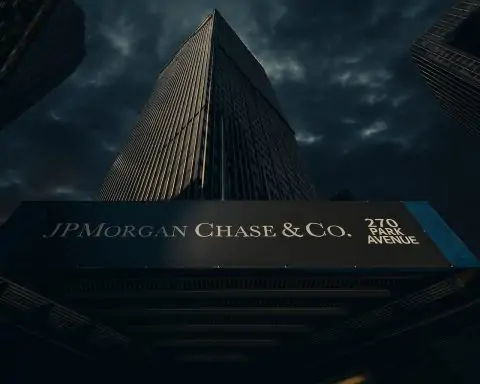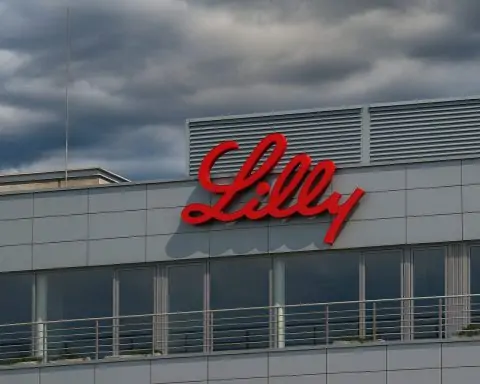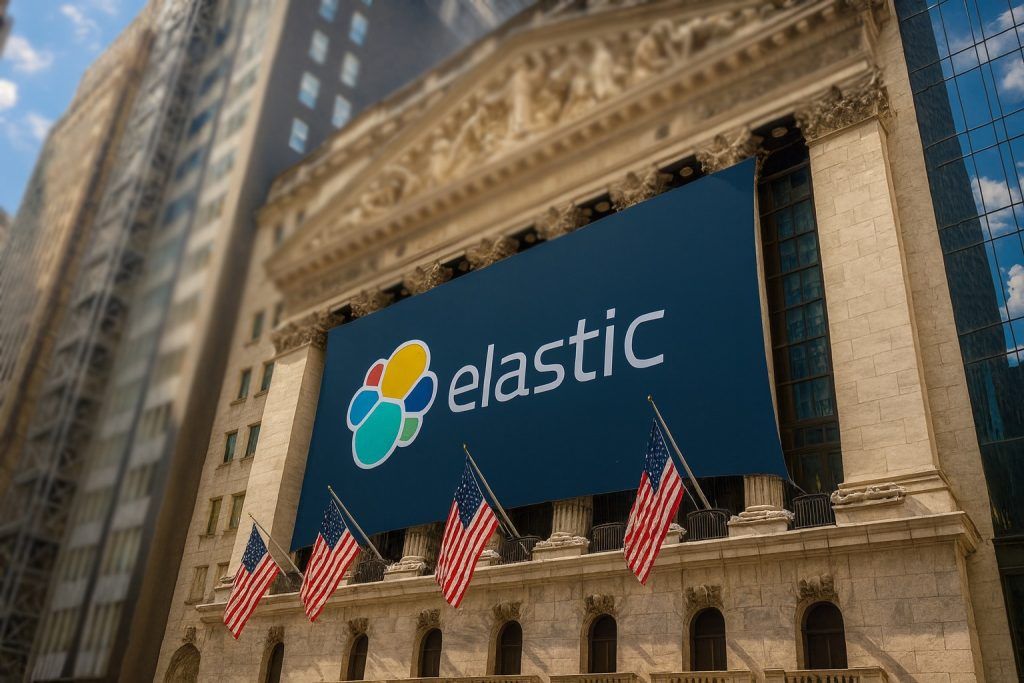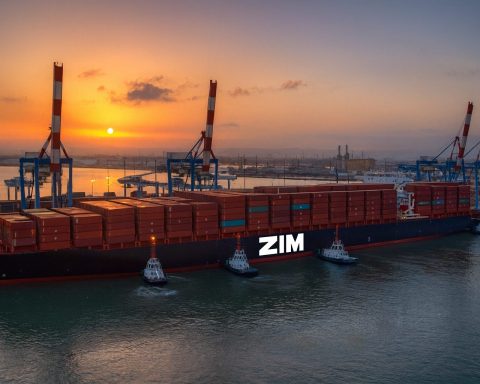Pfizer has closed its up to $10 billion acquisition of Metsera (MTSR) and raised $6 billion in bonds to help fund the deal. Here’s what today’s developments mean for former Metsera shareholders, Pfizer investors and the future of the obesity drug market.
- Pfizer has completed its acquisition of Metsera in a deal valued at up to $10 billion, paying $65.60 in cash per share plus a contingent value right (CVR) of up to $20.65 per share tied to clinical and regulatory milestones. [1]
- Metsera’s shares (MTSR) have ceased trading on Nasdaq following the close of the market on 13 November 2025; the company is now a wholly owned Pfizer subsidiary. [2]
- Today, 21 November 2025, the newest development is financing: Pfizer has raised $6 billion via a seven‑tranche bond sale, with part of the proceeds earmarked to fund the cash portion of the Metsera acquisition. [3]
- The deal brings Pfizer a portfolio of next‑generation obesity candidates, including MET‑097i (GLP‑1 RA), MET‑233i (amylin analog), and oral GLP‑1 programs, positioning the company to compete with Novo Nordisk and Eli Lilly in a market analysts see reaching $150 billion annually by the end of the decade. [4]
- For former Metsera (MTSR) shareholders, the upside from here is entirely tied to the non‑transferable CVR, which will pay out only if specific milestones are hit.
What Happened Today: Pfizer Locks In $6 Billion Bond Financing
The main fresh headline for 21 November 2025 is on the financing side, not on Metsera’s standalone stock — because MTSR no longer trades.
German market outlet boerse‑global/ad‑hoc‑news reports that Pfizer has successfully raised $6 billion in the U.S. investment‑grade bond market to support the cash portion of its nearly $10 billion Metsera takeover. [5]
According to that report:
- Pfizer executed a seven‑tranche bond offering earlier this week.
- The sale drew strong investor demand, allowing the company to print debt at relatively tight spreads despite the higher‑rate environment.
- Notable tranches highlighted include:
- A 10‑year bond of $1.25 billion priced at about 75 basis points over U.S. Treasuries.
- A 40‑year bond of $500 million priced at roughly 100 basis points over Treasuries. [6]
The same piece frames the bond deal as a vote of confidence in Pfizer’s credit quality and its obesity strategy, even as the company continues to digest a post‑COVID revenue slump and navigate political scrutiny of drug pricing. [7]
For investors, today’s financing news matters because it:
- Confirms how Pfizer is funding the cash leg of the Metsera deal.
- Adds incremental interest expense that will flow through Pfizer’s income statement in coming years.
- Signals that bond markets are comfortable backing Pfizer’s push back into weight‑loss drugs.
Pfizer has said it will update its 2026 financial guidance later this year to fully reflect the Metsera acquisition and related debt. [8]
Deal Recap: How Pfizer Won the Bidding War for Metsera
To understand where we are today, it helps to rewind through a very dramatic takeover battle.
1. Pfizer’s Original Offer
Back in September, the Financial Times reported that Pfizer moved first with a deal valuing Metsera at up to about $7.3 billion — $47.50 in cash per share plus up to $22.50 in CVR payments tied to three clinical milestones. [9]
This initial offer already implied a hefty premium to where Metsera had been trading, framing the biotech as a high‑growth obesity play with meaningful upside if its drug programs worked.
2. Enter Novo Nordisk
On 30–31 October 2025, Novo Nordisk crashed the party. A Reuters exclusive detailed how Novo launched a rival bid that Metsera’s board quickly called “superior,” valuing the company at up to $9 billion (around $77.75 per share). [10]
Key points from that phase of the battle:
- Novo’s proposal combined $6 billion upfront with additional milestone payments. [11]
- Pfizer slammed Novo’s move as “reckless” and anti‑competitive, signaling it would “pursue all legal avenues” to defend its earlier merger agreement. [12]
- Commentators quickly flagged antitrust risk around a Novo‑Metsera tie‑up, given Novo already dominates the GLP‑1 market with Wegovy and Ozempic. [13]
3. Lawsuits and Court Drama
As Metsera’s board weighed the improved Novo proposal, Pfizer escalated:
- Pfizer filed lawsuits in Delaware’s Court of Chancery against Metsera, its directors and Novo Nordisk, arguing that switching to Novo’s bid would breach their merger agreement and attempt to bypass antitrust review. [14]
- Metsera, in turn, welcomed the court’s decision to deny Pfizer’s request for a temporary restraining order that would have blocked Metsera from pursuing Novo’s competing offer. [15]
At the same time, class‑action firm Monteverde & Associates began soliciting Metsera shareholders, questioning whether the board was securing the best possible price and highlighting the value split between cash and CVR payments. [16]
4. Pfizer Ups the Ante – and Wins
Ultimately, Pfizer chose to raise its bid rather than walk away.
On 13 November 2025, Pfizer announced the completion of an enhanced deal:
- $65.60 in cash per Metsera share, valuing the equity at about $7.0 billion.
- A non‑transferable CVR worth up to $20.65 per share in potential additional cash payments if three specified clinical and regulatory milestones are met.
- An overall transaction value of up to $10 billion (or $86.25 per share) at full CVR payout. [17]
Metsera shareholders approved the transaction, and MTSR ceased trading on the Nasdaq Global Select Market after the close of trading on 13 November. [18]
Metsera’s Pipeline: Why Big Pharma Fought So Hard
The intensity of the bidding war only makes sense if you understand what Metsera brings to the table.
A NuSH‑Focused Obesity Platform
Metsera describes itself as a clinical‑stage biotechnology company developing “nutrient‑stimulated hormone (NuSH)” therapies — injectable and oral peptides designed to:
- Reduce barriers to long‑term adherence
- Offer injectable‑like efficacy in oral form
- Improve manufacturability and scalability
- Push efficacy and tolerability beyond current GLP‑1 standards [19]
Key Programs Now Inside Pfizer
From Metsera’s own pipeline overview and Pfizer’s press release, the combined portfolio looks like this:
- MET‑097i – ultra‑long‑acting GLP‑1 RA (injectable)
- A subcutaneous GLP‑1 receptor agonist designed for once‑monthly dosing (with weekly regimens also under evaluation).
- Phase 1/2 data showed “competitive and durable weight loss” with around 7.5% body‑weight reduction by day 36 in early studies, with weight loss continuing for weeks after the last dose. [20]
- Pfizer says MET‑097i is about to begin Phase 3 development, with commercial launch targeted around 2028–2029 if trials succeed. [21]
- MET‑233i – ultra‑long‑acting amylin analog
- An injectable amylin analog engineered for once‑monthly dosing.
- Designed to be used both alone and in combination with MET‑097i, potentially enhancing weight loss and metabolic control beyond GLP‑1 alone. [22]
- MET‑224o / MET‑097o – oral GLP‑1 RA peptides
- Oral formulations intended to deliver “injectable‑like” weight loss with lower dose levels to improve scalability.
- Built on Metsera’s MOMENTUM oral peptide delivery platform; Phase 1 work is already underway in Canada with a predecessor compound. [23]
Taken together, this gives Pfizer an integrated injectable‑plus‑oral obesity franchise that could eventually compete across multiple patient segments, from early‑stage obesity to long‑term maintenance and potentially cardiometabolic complications.
How the Market Has Reacted So Far
Although Metsera is now private under the Pfizer umbrella, the market left a clear footprint on the way to today’s delisting.
Metsera’s Wild Share‑Price Ride
- On the way into the bidding war, MTSR was already a market favorite; by late October, shares had nearly doubled year‑to‑date. [24]
- As Pfizer and Novo kept sweetening their proposals, Metsera was frequently highlighted on “most active” and “biggest movers” lists, with intraday spikes and pullbacks driven by every new headline. [25]
- According to Investing.com, the last quoted Metsera stock price before delisting was about $70.50 per share, reflecting a modest discount to the maximum potential $86.25 deal value once the CVR is included. [26]
That discount is typical in deals with milestone‑based payouts: markets rarely price in a 100% probability that every CVR milestone will be achieved.
Derivatives Traders Piled In
Options traders also leaned heavily into Metsera. A Nasdaq options recap from 14 November highlighted MTSR among the most active contracts in the Russell 3000, with roughly 151,000 options contracts changing hands — more than 300% of the stock’s average daily trading volume over the prior month. [27]
That surge in derivatives activity underscores how event‑driven funds and short‑term traders treated Metsera as a pure merger‑arbitrage and volatility play once the takeover battle became public.
Pfizer’s Stock Story
On Pfizer’s side:
- The company has openly acknowledged that the Metsera acquisition will be dilutive to earnings through 2030, as it layers in R&D and integration costs ahead of potential revenue. [28]
- Yet commentary from market observers — including equity research pieces and retail‑oriented outlets like The Motley Fool — frames Metsera as a necessary growth bet for a pharma giant facing $17–18 billion in annual patent expiries between 2026 and 2028. [29]
Today’s $6 billion bond sale adds leverage to Pfizer’s balance sheet but also signals that fixed‑income investors are comfortable backing this strategic pivot into obesity drugs. [30]
Why This Deal Matters for the Obesity Drug Race
The Metsera transaction is not happening in isolation. It sits squarely in the middle of a reshaping obesity‑drug landscape:
- Analysts now routinely peg the global obesity treatment market at around $150 billion in annual sales by the early 2030s, driven largely by GLP‑1‑based therapies. [31]
- Novo Nordisk and Eli Lilly still dominate with Wegovy, Ozempic and Zepbound, but both capacity constraints and upcoming patent cliffs are forcing them — and their rivals — to think about next‑generation mechanisms, longer dosing intervals and oral options. [32]
- Venture and M&A observers say the Metsera saga is emblematic of a broader pickup in biotech dealmaking, with large pharmas hunting for clinical‑stage assets that can move the revenue needle in the late 2020s. [33]
For Pfizer, Metsera is also a reset button after earlier attempts at oral GLP‑1 candidates were scrapped due to liver safety issues. By buying into a de‑risked, late‑stage pipeline, Pfizer is effectively paying to shortcut several years of internal R&D. [34]
What Former Metsera (MTSR) Shareholders Should Know Now
If you owned Metsera stock, here’s where things stand as of 21 November 2025:
1. MTSR No Longer Trades
- Metsera’s common shares stopped trading on Nasdaq after the close on 13 November 2025.
- Going forward, you will not see intraday quotes or be able to buy or sell MTSR in the open market. [35]
2. You Receive Cash + CVR
Under the final merger terms:
- You should receive $65.60 in cash per share, typically via your broker or the deal’s paying agent.
- You also receive a non‑transferable contingent value right (CVR) that could pay up to $20.65 per share in additional cash, but only if three predefined clinical and regulatory milestones for Metsera’s pipeline are met within specified time frames. [36]
Because the CVR is non‑transferable, it does not trade on an exchange like a stock or a listed warrant. You essentially hold a contractual claim on future milestone payments, and whether those land depends entirely on how the integrated Pfizer–Metsera program performs.
Independent analysis on platforms such as Seeking Alpha has argued that it is “highly likely” that at least part of the CVR will pay out, but those views are speculative and hinge on successful late‑stage trials and regulatory approvals. [37]
3. Key Milestones to Watch
While the exact milestone triggers are laid out in deal documents filed with the SEC, public statements point to several obvious catalysts:
- Start and progress of Phase 3 trials for MET‑097i.
- Phase 1/2 data readouts for MET‑233i and the oral GLP‑1 candidates.
- Regulatory filings and approvals in major markets. [38]
Pfizer has indicated that Metsera’s portfolio could begin contributing revenue late in the decade, with launches targeted around 2028–2029, which aligns roughly with the patent‑expiry window the company needs to offset. [39]
What Today’s News Means for Pfizer Investors
For Pfizer shareholders watching today’s bond news, the implications are mixed but clear:
- Balance sheet: The additional $6 billion in debt increases gross leverage but comes at relatively attractive fixed rates for a blue‑chip issuer, according to the ad‑hoc coverage of the bond sale. [40]
- Earnings profile: Management reiterates that the Metsera transaction will be EPS‑dilutive through 2030, as the company front‑loads R&D and integration costs while it waits for obesity revenues to ramp. [41]
- Strategic positioning: Metsera’s assets give Pfizer a credible shot at being a top‑tier player in obesity again, with potential monthly dosing and oral options that could differentiate it from existing weekly GLP‑1 injectables. [42]
For long‑term investors, the key question is whether today’s extra leverage and near‑term dilution are a fair trade for late‑decade growth in one of the most profitable categories in pharma.
Quick FAQ
Is Metsera still trading under the ticker MTSR?
No. MTSR has been delisted from the Nasdaq Global Select Market following the close on 13 November 2025, after Pfizer completed its acquisition. [43]
What did Metsera shareholders receive in the deal?
Each share of Metsera common stock is being converted into $65.60 in cash plus a non‑transferable CVR worth up to $20.65 per share if certain milestones are hit. [44]
Can I trade or sell the Metsera CVR?
No. The CVR is non‑transferable, meaning it does not trade on exchanges. You simply hold it in your account and receive payments if and when milestones are achieved. [45]
Why did Pfizer and Novo Nordisk fight so hard over Metsera?
Metsera owns a portfolio of clinical‑stage GLP‑1 and amylin programs with the potential for once‑monthly injections and potent oral therapies, in a market expected to exceed $150 billion per year by the early 2030s. Both companies saw Metsera as a way to strengthen their obesity pipelines. [46]
Disclaimer: This article is for information and news purposes only and does not constitute investment advice. Always do your own research or consult a licensed financial advisor before making investment decisions.
References
1. www.reuters.com, 2. www.pfizer.com, 3. www.ad-hoc-news.de, 4. www.pfizer.com, 5. www.ad-hoc-news.de, 6. www.ad-hoc-news.de, 7. www.ad-hoc-news.de, 8. www.pfizer.com, 9. at.marketscreener.com, 10. www.reuters.com, 11. www.reuters.com, 12. www.reuters.com, 13. www.reuters.com, 14. de.marketscreener.com, 15. investors.metsera.com, 16. www.sahmcapital.com, 17. www.pfizer.com, 18. www.pfizer.com, 19. metsera.com, 20. metsera.com, 21. www.reuters.com, 22. metsera.com, 23. metsera.com, 24. www.reuters.com, 25. finviz.com, 26. www.investing.com, 27. www.nasdaq.com, 28. www.pfizer.com, 29. www.reuters.com, 30. www.ad-hoc-news.de, 31. www.reuters.com, 32. www.reuters.com, 33. www.statnews.com, 34. www.reuters.com, 35. www.pfizer.com, 36. www.pfizer.com, 37. seekingalpha.com, 38. www.pfizer.com, 39. www.reuters.com, 40. www.ad-hoc-news.de, 41. www.pfizer.com, 42. www.pfizer.com, 43. www.pfizer.com, 44. www.pfizer.com, 45. www.pfizer.com, 46. metsera.com










